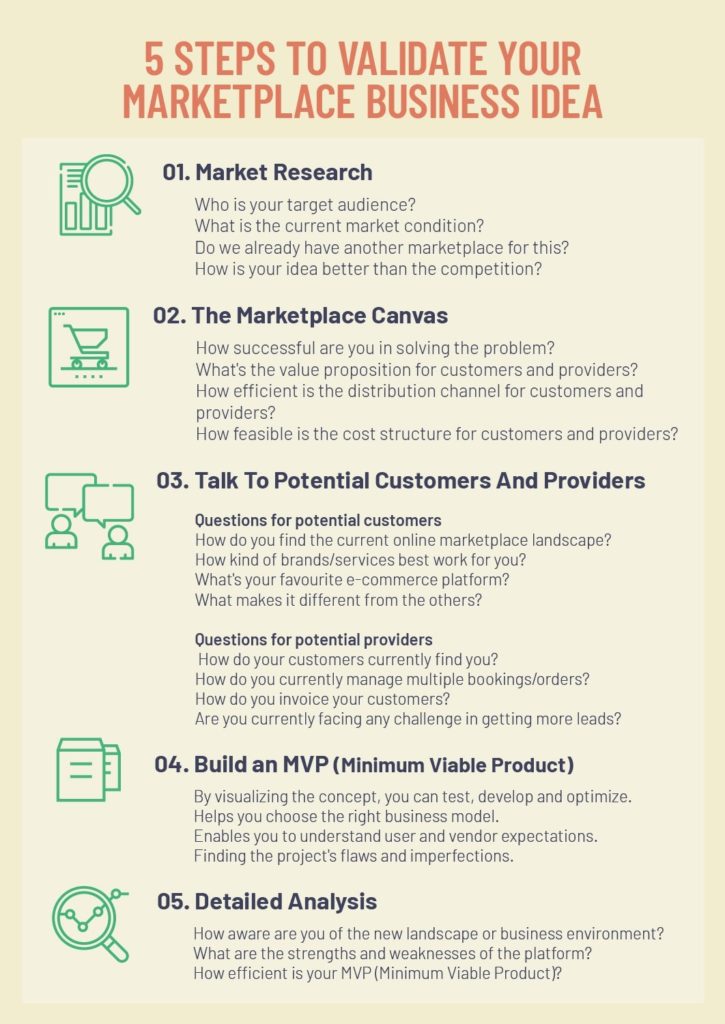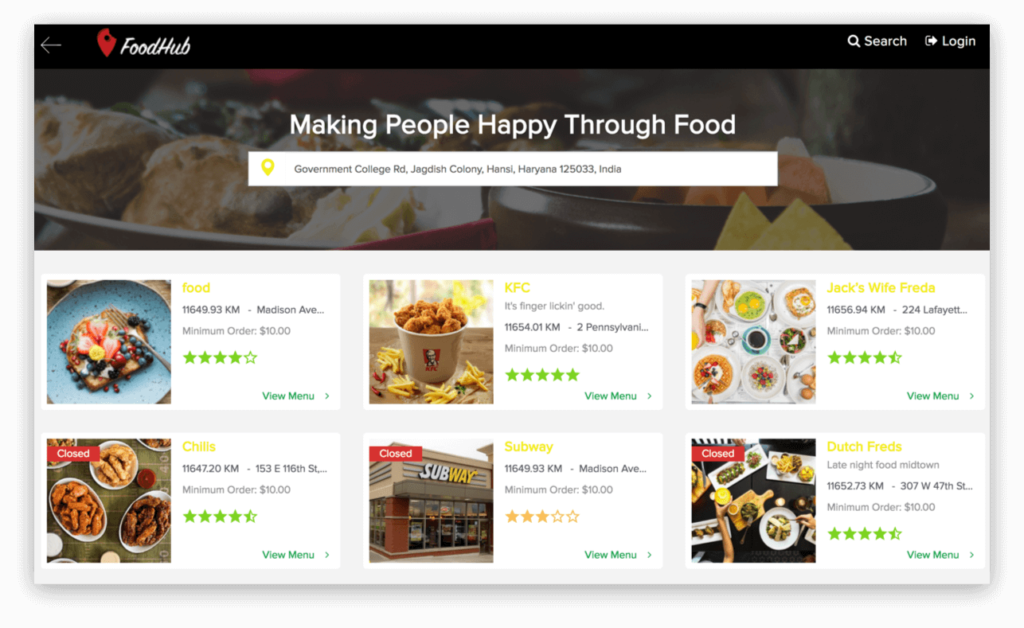
- Products
- Solutions
- Learn
- Partner
- Try Now

The evolution of online marketplace platforms has been remarkably huge in the recent decade. Clearly, people love the idea of hopping from one brand to another via a single online portal. When all this can be done from the comfort of their homes, it’s bound to replace the conventional shopping models.
The pandemic certainly has added more to the overly-hyped but credible marketplaces, thanks to the significant attitudinal shift towards online shopping models. From reaching customers residing in far-off locations, same-day delivery options to the highly customized shopping experience, online marketplaces have commanded global attention in recent times.
Inspired by some of the leading multi-vendor marketplace platforms such as Amazon, Etsy, eBay, entrepreneurs now are more than willing to build a marketplace platform. However, the big question here is, are they really ready for their own venture? Well, if you have already crystallized your thoughts around the concept, here are a few things that you must factor in before writing your first line of code or choosing a viable business model. Here’s a simple checklist to pre-validate your best online marketplace platform idea. But first, a little more about the online marketplace industry.
What is an online marketplace?

An online marketplace, also known as an electronic marketplace is a platform that brings buyers and sellers together in one place. Brands today use these platforms to reach out to customers who want to purchase their products or avail their services. The only difference, however, is a buyer gets to choose amongst several other brands that choose to list their products on the same platform. Some of the examples include Amazon, eBay, Craigslist, Etsy, Alibaba etc.
Why do you need to validate your marketplace business idea?
Building a viable and credible marketplace isn’t as easy as one might think. Sometimes, the best ideas fail in execution or result in low traction or user engagement. Although a lot of money and resources are deployed in building a lucrative app, it might not always be in consumers’ best interest. Therefore, including the most relevant features or adopting an online marketplace software that best serves your business requirements is of prime importance.
Listed below are a few reasons why you should validate your marketplace idea before you start building on something.
- To cater to the evolving needs of the growing audience
- Ensuring that the services reach the target audience
- Assessing the project’s flaws and better optimization
- Attracting new users
- Low cost and maximum results

Here are 5 steps to validate your marketplace business idea.
1. Market Research:
Before investing in any marketplace idea, you must conduct thorough market research. This entails knowing your potential competitors and their performance, target audience, latest market trends etc. The idea behind conducting this research is to assess the feasibility of your platform in the increasingly challenging markets.
You may come across hundreds of apps extending equally or several others dissolving because of low revenue and no traction. Digging into their stories will only help you build a unique platform that helps you target your target audience and engage them to the services without exhausting a great deal of money. Knowing about all these factors in advance will also help you customize your app features to best suit the needs of your target audience.
So while you’re at your market research, make sure you seek answers to the following:
- Who is your target audience?
- What is the current market condition?
- Do we already have another marketplace for this?
- How is my idea better than the competition?
- Why would consumers and providers make a switch?
- What happened to the business that didn’t last?
2. The Marketplace Canvas
After you’re done with your market research, it’s time to pen down your thoughts. The next step is to create a business model that covers the value propositions, distribution channels and revenue streams for both customers and providers. Building a marketplace canvas can be quite simple if you segregate your research insights into a fixed template that answers the following: Problem, solution, key metrics, distribution channels, customer segments, cost structure and revenue streams. Remember, the idea can only be successful if you focus on both customers and providers simultaneously.
This canvas will help you structure your thoughts by giving you an overview of what you want to develop. Acting upon a concept will minimize the risk of failing, plus you will know whether or not the concept is worth materializing. Here are some of the questions that must be addressed while formulating the marketplace canvas for your marketplace idea.
- How successful are you in solving the problem?
- What’s the value proposition for customers and providers?
- How efficient is the distribution channel for customers and providers?
- How feasible is the cost structure for customers and providers?
3. Talk to the target audience; seek insights from customers and providers
Once you’ve formulated your marketplace canvas, it is important to talk to your target audience and the potential providers. Their take on your platform matters the most when it comes to assessing the feasibility of the business. You may talk to someone in the same industry or release an online questionnaire to understand the preferences of shoppers. This is important if you need to know how often and in what circumstances would they be willing to make a switch.
The interviews may also help you identify some of the latest trends or key segments in the market. This will eventually help you include the most relevant features that target the right customer base at the right time. Here are some sample questions for potential customers and providers. Remember, you can only pitch your idea to the providers and customers after gauging their reaction to the current services.
Questions for potential customers:
- How do you find the current online marketplace landscape?
- What kind of brands/services would best work for you?
- What’s your favorite e-commerce platform?
- What makes it different from the others?
Questions for potential providers:
- How do your customers currently find you?
- How do you currently manage multiple bookings/orders?
- How do you invoice your customers?
- Are you currently facing any challenge in getting more leads?
4. Time for a detailed analysis
Platform designing is not at all an easy process. While a marketplace canvas helps you decide whether you should materialize your marketplace business plan, a plethora of other canvases will help you design the right platform. A detailed analysis of the following canvases will help you get a complete hold on the market you’re about to enter.
Ecosystem Canvas provides a broad lens on the brand new environment, industries which helps you understand the new landscape.
Motivation Matrix: Any business takes actions triggered by several motivation factors that are distilled into six core types: incentive, achievement, social, acceptance, fear, power and growth. Based on all these motivation factors, businesses predict how a user might interact with the platform.
MVP (Minimum Viable Product): Minimum Viable Product (MVP): “The minimum viable product is that version of a new product which allows a team to collect the maximum amount of validated learning about customers with the least effort.” – Eric Ries
Identifying the strengths and weaknesses of the platform via these frameworks may be a lengthy process, but they will benefit your business in the longer run.
5. Build an MVP (Minimum Viable Product)
As the term suggests, the idea is to develop a product having sufficient features to satisfy the early adopters. The app with core features (and nothing more) is presented and tested by a subset of potential users who suggest improvements for best development. Their reaction to the app performance will help you validate your assumptions. With an MVP, you can test your idea, design, features, user flow, and most importantly understand the expectations of both users and vendors.
Here’s how you can benefit from an MVP:
- By visualizing the concept, you can test, develop and optimize
- Helps you choose the right business model
- Helps you understand user and vendor expectations
- Finding the project’s flaws and imperfections
Summing up

Online marketplaces have extensively helped companies function 24/7, especially when the world came to a screeching halt. However, reaching the right audience isn’t as easy as it appears. From getting providers to sell their products or services on the platform to cultivating trust between brands and customers, the online marketplace has to sail through several stages.
After validating this checklist for building your own online marketplace, the next step is to find a feasible platform like Yelo that can get your business up and running at the earliest, that too with no coding or setup fees. With Yelo, you can find the perfect theme for different marketplace ideas such as e-commerce, home services, freelancing, consultation etc. So, before starting the next big thing, here are some need-to-know features!
Subscribe to stay ahead with the latest updates and entrepreneurial insights!

Subscribe to our newsletter
Get access to the latest industry & product insights.





















